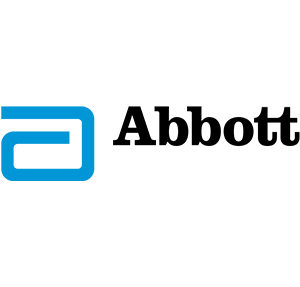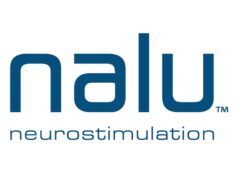 Abbott has announced the launch of the new dorsal root ganglion (DRG) Invisible Trial System, which is approved by the US Food and Drug Administration (FDA) and received CE Mark in Europe. People battling complex chronic pain conditions can now use the DRG Invisible Trial System to try Abbott’s dorsal root ganglion (DRG) stimulation—a clinically proven, non-opioid treatment option for targeted chronic pain management. Patients who find adequate pain relief with DRG therapy can then have Abbott’s Proclaim DRG system implanted, empowering them to manage their pain with familiar Apple consumer technology.
Abbott has announced the launch of the new dorsal root ganglion (DRG) Invisible Trial System, which is approved by the US Food and Drug Administration (FDA) and received CE Mark in Europe. People battling complex chronic pain conditions can now use the DRG Invisible Trial System to try Abbott’s dorsal root ganglion (DRG) stimulation—a clinically proven, non-opioid treatment option for targeted chronic pain management. Patients who find adequate pain relief with DRG therapy can then have Abbott’s Proclaim DRG system implanted, empowering them to manage their pain with familiar Apple consumer technology.
A form of neurostimulation, Abbott’s DRG therapy specifically targets the dorsal root ganglion—a structure adjacent to the spinal cord densely populated with sensory nerves that transmit chronic pain to the central nervous system. The therapy helps people living with neuropathic pain conditions by blocking pain signals with electrical pulses transmitted over the DRG. Clinical research, such as the ACCURATE study, has demonstrated that DRG therapy can provide superior pain relief when compared to traditional spinal cord stimulation (SCS) therapy for patients with persistent neuropathic focal pain conditions. Focal chronic pain conditions, including complex regional pain syndrome (CRPS), are some of the most prevalent and under-treated forms of chronic pain around the world.
Abbott’s DRG Invisible Trial System allows for a minimally invasive evaluation period. During an outpatient procedure, thin wires are placed in the spinal column near the DRG and a small, external battery is hidden discreetly under clothes “invisible” to the public. For about a week, the patient uses an Apple iPod touch to manage their pain relief—changing the stimulation settings within prescribed limits to evaluate how DRG therapy targets their body’s chronic pain symptoms. Earlier generation trial systems involved complex controllers connected to bulky programming cables, which were known to disrupt the trial experience and act as a barrier to effective therapy.
Abbott’s new DRG Invisible Trial System follows the company’s Invisible Trial System for BurstDR stimulation, which launched in 2015 to allow a discreet and effective way to evaluate SCS.
“With Abbott’s pioneering work to provide new options to treat different types of chronic pain, the intuitive DRG Invisible Trial System gives pain sufferers new hope,” said Allen Burton, medical director of neuromodulation at Abbott. “By enabling a temporary trial, people can test the treatment before receiving a permanent implant. If they experience meaningful pain relief, they can choose to move forward with our DRG therapy and find long-term pain relief—helping them live a fuller, healthier life again without relying on opioids.”
Abbott is the first and only company in the world with FDA approval and CE Mark to offer DRG therapy through an evaluation period and implantable neurostimulation device. Since it’s commercialisation, adoption of the therapy has accelerated quickly: procedures have been performed by hundreds of physicians across three continents, with new physicians being trained continually on the procedure.
“Internationally, governments and health agencies are prioritising new therapies that can combat chronic pain patients’ exposure to addictive pain medication,” Burton said.
A Non-Opioid Treatment for Chronic Pain
An alarming 1.5 billion people around the world are affected by chronic pain. While opioids are a prescribed therapy, an estimated 15.5 million people worldwide are considered opioid dependent. Prescription opioid medication can have an important role in helping patients manage acute (short-term) or cancer pain; however, these drugs lack evidence as an effective treatment to treat chronic (long-term) pain.
Compounding the challenge, neuropathic conditions like CRPS have been difficult for physicians to treat because the pain stems from damage to the body resulting in a disruption of how the peripheral and central nervous systems process or transmit pain signals. Examples of these conditions may include chronic pain following hernia repair, total joint replacements or amputation. Worse, neuropathic pain conditions are often characterised by intense shooting pain or a burning sensation. In their search for pain relief, many people try medications including opioids and undergo surgery without success. DRG stimulation therapy is proven to provide superior relief for people suffering from CRPS and other intense, lower-limb pain when compared to SCS.
Highlighting neurostimulation’s role in combatting opioid reliance in chronic pain patients, Timothy Lubenow, one of the leading international pain experts and medical director of The Rush University Medical Center Pain Clinic in Chicago, said: “Considering the societal costs and negative long-term impact on people, the full cost of opioid medication cannot be measured by their price alone. Alternative interventional therapies that might be more expensive initially can be exponentially less expensive in the long run.”













